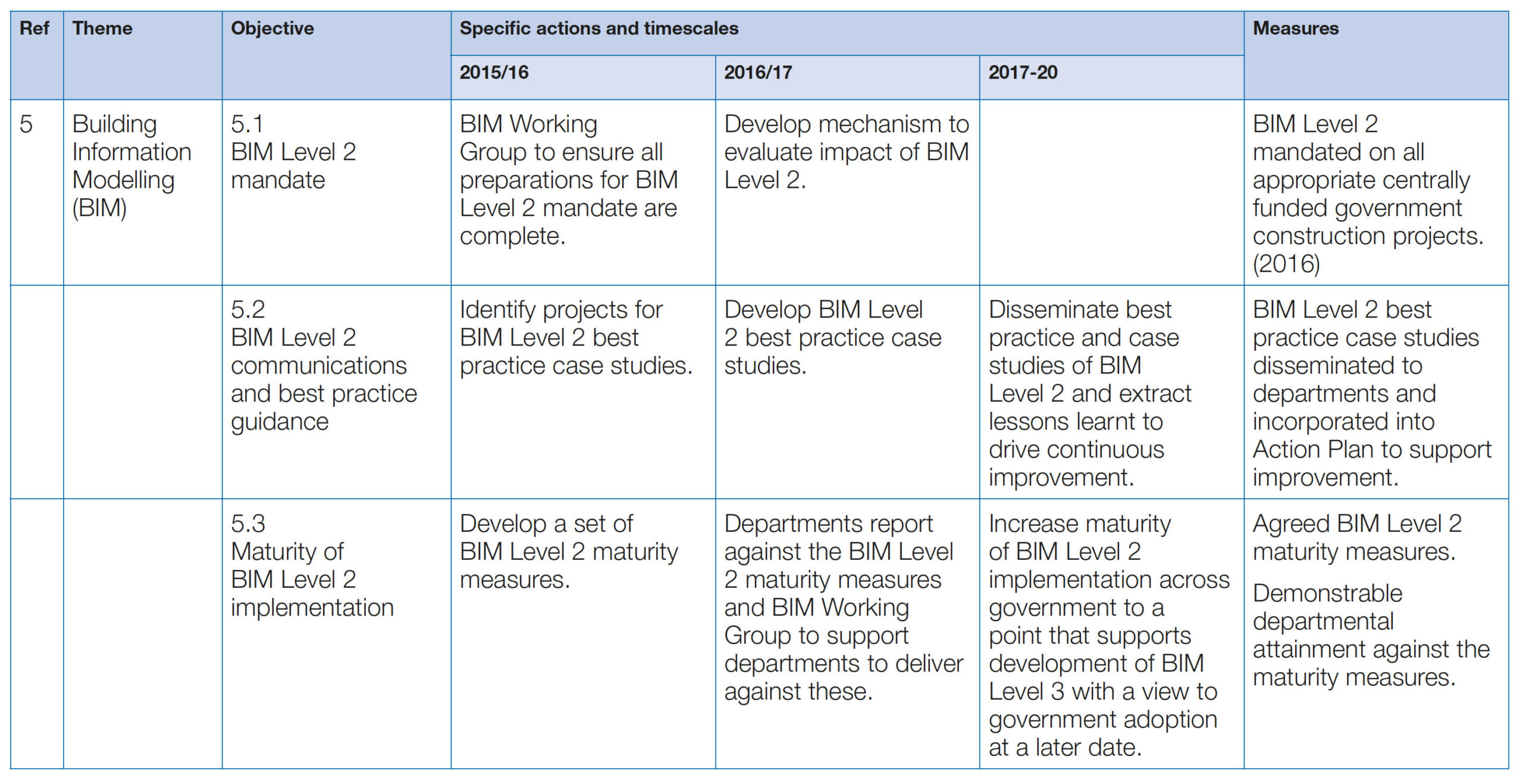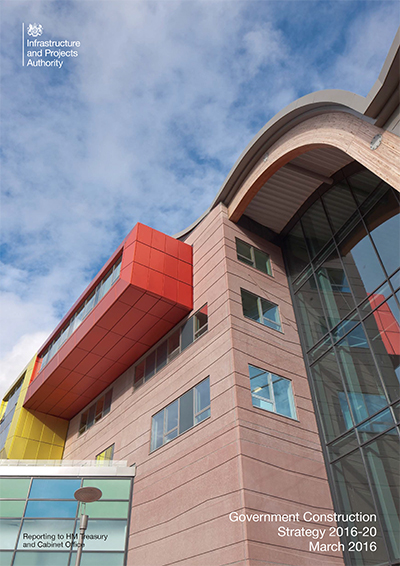The new Government Construction Strategy 2016-20 highlights Level 2 BIM as a key component in its target of £1.7bn in cost savings on government-funded projects by 2020 – and says that BIM has already contributed to £3bn in cost savings achieved in 2011-15.
However, its ambitions on Level 3 BIM, which has just secured £15m in government funding over three years, appear to be fairly muted.
According to the strategy, government targets for 2017-20 are to “increase maturity of BIM Level 2 to a point that supports development of BIM Level 3 with a view to government adoption at a later date”.
No timetable has ever been set for the adoption of Level 3, although members of the BIM Task Group had previously talked of Level 3 “early adopter” projects getting underway in 2017/18.
The new GCS 2016-20 was published yesterday by the Cabinet Office and the newly formed Infrastructure and Projects Authority.
Other commitments include making progress on Soft Landings, new models of construction procurement, maintaining publication of the government construction pipeline, industry skills, sustainability objectives and fair payment.

BIM is referenced in the new Government Construction Strategy
GCS 2016-20 is due to be implemented by a series of working groups which will develop strategies around key themes, with their work then coordinated by the Government Client Board, made up of representatives of the major spending departments.
According to the strategy, Level 2 BIM has taken secure hold across government departments and the mandate will be fully implemented from 4 April.
It says: “The majority of departments have already met the requirements for BIM Level 2 and the remaining departments are on target to meet the 2016 mandate. The task now is to consolidate and embed BIM Level 2 throughout departmental processes.”
The document then sets out a series of staged targets on BIM for government clients in 2016-20, including plans to be delivered in 2015/16 to develop a set of BIM Level 2 maturity measures, and identify projects for BIM Level 2 best practice case studies.
In 2016/17, there are plans to “develop a mechanism to evaluate the impact of Level 2 BIM”, and to develop the above-mentioned BIM Level 2 best practice case studies. Departments will also be expected to report against BIM Level 2 maturity measures, with support from the BIM Working Group.
Reaction to the strategy has been fairly limited, but positive. Tom Oulton, a BIM manager at Turner & Townsend, told BIM+: “In short GCS2016-20 is a good thing that bodes well for BIM adoption and the digital construction industry. It is sensible about our industry’s digital future; it also seeks to address the skills shortage and fair payment; and it understands the need to focus on whole-life costs (TotEx)”
And in a LinkedIn post, Rob Garvey, a lecturer at the University of Westminster, hailed it as a “pragmatic document”, that had shied away from the “headline-grabbing targets” of previous iterations.












